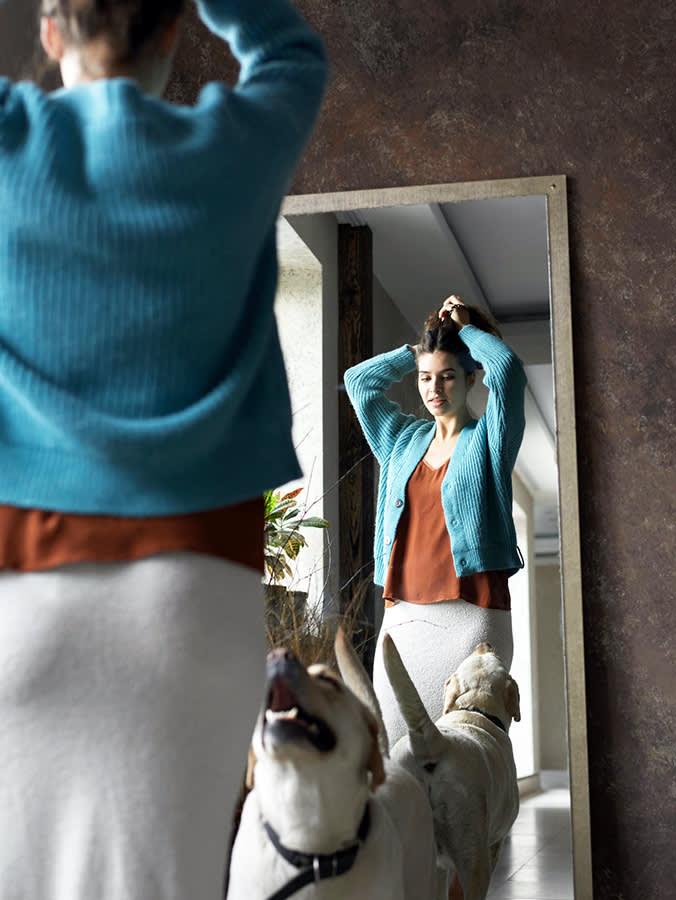What Happens If You Don’t Take Your Dog For a Walk?
And what you can do inside instead
We all know that taking our furry friends for a walk is a highlight of their day. Tails wagging, noses sniffing and the sheer joy of exploration – it’s a canine carnival every time you hit the pavement. But have you ever wondered what happens if, for some reason, your pup misses out on their daily walk?
Most pup parents take their beloved dogs for a walk daily, sometimes more. You love it, they love it – it keeps everyone happy. But what would happen if one day you were sick? Or snowed in? Or there was an emergency? Discover what repercussions you might expect (if any) and what you can do inside to help give them a ‘walk’ if you’re unable to get outside with your dog.
Trick question: All dogs are perfect! But find out which type is the best fit for you.
The benefits of a walk
“Dogs can get a lot out of walks with both physical and mental stimulation,” says veterinary behaviourist Dr Katie Friel-Russellopens in new tab.
Walks not only burn calories and build muscle, which is “great for their health and well-being and reducing the risk of joint disease”, but they also satisfy a deep-seated instinct in dogs – the ‘seeking drive’ – all about exploring their world. The sights, sounds and smells of the environment contribute to their overall well-being, too.
How much do you spend on your pet per year?
However, Dr Friel-Russell points out that it’s not all sunshine and rainbows. “Walks can also have negative impacts on a dog’s well-being,” she says. For dogs with existing health issues, for example, strenuous walks can exacerbate problems. “And for some dogs, the negative stress of being on a walk if they are anxious around people, other dogs, traffic or noises and new places can be detrimental to their overall welfare.”
Timing isn’t everything
“It’s not about how often a dog needs to be walked, but whether the walk is right for them at that moment,” says Dr Friel-Russell. While the ideal scenario involves a couple of enjoyable walks each day, she stresses the importance of tailoring the walk to the individual dog.
For post-surgery pups, limiting or avoiding walks might be necessary for a period, and “avoiding walks for a period of months whilst treating behaviour problems is also not uncommon,” adds Dr Friel-Russell, “but sees improvement overall much faster meaning they’re back out on their walks faster, too.”
The focus should be on what’s in the best interest of the dog, not a fixed schedule: “I wouldn’t think about how often a dog needs to be walked,” she adds, “but instead, ‘is this walk, right now, right for my dog?’”
What happens if you miss a dog walk?
So, what happens if your pup can’t stretch their legs outside? According to Dr Friel-Russell, it’s not just about cabin fever or pent-up energy; it’s about missing out on crucial mental stimulation. To combat this, she recommends transforming your home into an enrichment playground. Sniffing, chewing, training, and play activities can replace the outdoor experience and keep your dog content and calm.
“Even if you can’t go outside for a walk you can still spend the same amount of time working with your dog inside the house at a suitable level,” says Dr Friel-Russell. “You’ll be surprised at how settled they are afterwards and how similar the outcome is to going on a walk.”
What to do when you can’t take your dog for a walk
When you find yourself in a situation where a walk isn’t possible, Dr Friel-Russell suggests a variety of activities within the home. Puzzle toys, training sessions and interactive play can engage your dog’s mind just as effectively as a walk. She says that the key is not to focus on the missed walk but rather on creating a fulfilling mentally stimulating experience indoors.
While walks are undeniably beneficial for our furry companions, it’s essential to understand that their well-being is the priority. Tailoring activities to their needs, whether inside or outside, ensures a happy and healthy pup. So, the next time you can’t take your dog for a walk, don’t fret – embrace an inside adventure instead.


